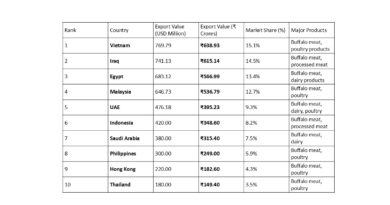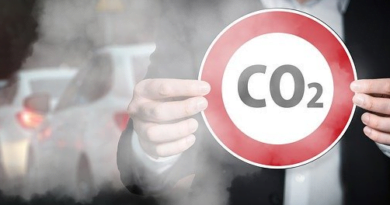Kigali Amendment
Context:
Contents
India Decides to Ratify the Kigali Amendment
Key Highlights
- The Union Government approved the ratification of the Kigali Amendment to the Montreal Protocol on phasing down climate-damaging refrigerant Hydrofluorocarbons (HFCs).
- India decided to ratify a key amendment to the 1989 ozone-saving Montreal Protocol negotiated five years ago
- It comes close on the heels of similar decisions by the United States and China, the world’s largest producers and consumers of HFCs. 122 countries had ratified the Kigali Amendment by the end of July 2021.
- It enables the phase-out of hydroflurocarbons, a set of chemicals notorious for their capacity to warm the planet.
- The 2016 amendment was seen as one of the most important breakthroughs in the global efforts to fight climate change, because the HFCs, a set of 19 gases used extensively in the air-conditioning and refrigerant industry, are known to be hundreds, even thousands, of times more potent than carbon dioxide in their ability to cause global warming.
- It is estimated that a complete phase-out of HFCs by 2050 would prevent about 0.5 degree Celsius rise in global temperatures by the end of this century.
- Therefore, is crucial to achieving the target of restraining the increase in global temperatures to 2 degree Celsius from pre-industrial times. As pointed out by a recent report of the Intergovernmental Panel on Climate Change (IPCC), the average temperatures of the planet has already risen by about 1.1 degree Celsius.
- The United States, China and India are in separate groups of countries, with different time schedules to phase out their HFCs and replace them with climate-friendly alternatives.
- India has to reduce its HFC use by 80% by the year 2047, while China and the United States have to achieve the same target by the year 2045 and 2034 respectively.
- India will complete its phasedown of HFCs in four steps from 2032 onwards with a cumulative reduction of 10% in 2032, 20% in 2037, 30% in 2042 and 80% in 2047.
- Amendments to the existing legislation framework, the Ozone Depleting Substances (Regulation and Control) Rules to allow appropriate control of the production and consumption of hydrofluorocarbons to ensure compliance with the Kigali Amendment will be done by mid-2024.
About Kigali Amendment
- The Kigali Amendment to the Montreal Protocol is an international agreement to gradually reduce the consumption and production of hydrofluorocarbons (HFCs).
- It is a legally binding agreement designed to create rights and obligations in international law.
- The Montreal Protocol was originally created to preserve and restore the ozone layer, and it worked.
- The Protocol was an agreement between participating countries to phase out certain ozone depleting gases. HFCs were used to replace the substances banned in that agreement because they have zero impact on the ozone. However, HFCs are powerful greenhouse gases that contribute to climate change, so this amendment adds HFCs to the list of chemicals that countries promise to phase out.
- As of July 14, 2021, 121 states and the European Union have ratified the Kigali Amendment. The US has not ratified the amendment yet, but in April 2021 it pledged to do so.
\
Kigali Agreement Important Features
The Kigali Agreement is significant because it addresses the vital question of HFCs. HFCs are powerful greenhouse gases and to mitigate climate change, countries must strive to reduce and gradually phase out their production and usage. Hence, the Kigali Agreement assumes significance. The important features of this agreement are briefly described below.
- It is a legally binding agreement between the signatories. And, there are non-compliance measures to ensure its implementation.
- It sets different targets for countries depending upon the status of development, different socio-economic constraints, and varying technological and scientific capacities.
- The Kigali Agreement upholds the principle of Common but Differentiated Responsibilities and Respective Capabilities.
- The agreement classifies the signatory parties into three as per the phase-down schedules to freeze and reduce the production of HFCs.
- The first group consists of developed countries, led by the US and the European Union countries, that would have started the phase-down of HFCs by 2019, and reduce the level to 15% of 2012 level by the year 2036.
- The second group consists of developing economies such as China, Brazil, and also some African States that will start the phase-down by 2024 and decrease it to 20% of 2021 levels by the year 2045.
- The third group (in which India is placed) consists of developing economies and also some of the hottest nations, that will start the phase-down by 2028 and reduce the level to 15% of 2024-26 levels by the year 2047. Examples: Pakistan, Iran, Saudi Arabia.
Significance for India:
- India became a party to the Montreal Protocol on Substances that Deplete the Ozone Layer in June 1992 and since then has ratified the amendments to the Montreal Protocol. India has successfully met the phase-out targets of all the Ozone Depleting Substances as per the Montreal Protocol Schedule.
- India is one of the first countries in the world to launch a cooling action plan in 2019. This comprehensive plan is aimed at reducing cooling demand, enabling refrigerant transition, enhancing energy efficiency and better technology options with a 20-year time horizon.
- The signing of the Kigali Amendment is a cue for the markets to make a faster transition from HFCs to cleaner gases.
- It would boost domestic manufacturing and employment generation goals.
- The ratification would signify that India is ready to compete in the market for low-Global Warming Potential GWP (climate-friendly) refrigerants, which will spur domestic innovation and attract international investments.
- The decision would pave the way for India to achieve its climate change mitigation goals and cooling commitments. India is among a small group of countries on track to meet its climate commitments under the Paris Agreement.
Implications of Kigali Agreement on India
Indian industries using HFCs like Air-Conditioning industry, Automobiles, and refrigeration industry have some serious implications on financial and technical fronts:
- Financial implications – Industries have to either invest in R & D to find out the substitutes for HFCs or they have to buy patented substances and technologies from other MNCs. Consequently, the cost of production will increase which may ultimately shrink the buyer base for their products.
- Technological implications – Some of the developed nations have already started using substitutes of HFCs in their products and have a sound technological knowledge about their use. Without technology transfer or research, it would be difficult for domestic industries to compete with them in global as well as domestic market.
On a positive side, this will incentivise business and scientific fraternity to invest their financial and intellectual resources in finding out more economic and environment-friendly technological alternatives.
What after HFCs?
The answer is HFO refrigerants. HFO stands for hydrofluoro-olefin. HFC refrigerants are composed of hydrogen, fluorine and carbon atoms connected by single bonds between the atoms. HFO refrigerants are composed of hydrogen, fluorine and carbon atoms, but contain at least one double bond between the carbon atoms.
HFO-1234yf has physical properties similar to HFC-134a. Therefore, HFO-1234yf has the potential to be used in current HFC-134a systems with minimal system modifications.
Characteristics of HFO 123yf
- Low toxicity.
- Low GWP; GWP = 4.
- Zero ozone depletion potential.
- Low total contribution to climate change.
- Same operating pressures as the current HFC-134a system.
What is Montreal Protocol?
- The Montreal Protocol is a most effective international environmental treaty to phase out the Ozone Depleting Substances (ODSs) from the atmosphere.
- It came into force in 1989.
- It has 197 member parties to the protocol and become a first international treaty with complete ratification.
- It has undergone several amendments and Kigali amendment is the eighth amendment to this protocol.
- It has successfully curbed the 98% production of chlorofluorocarbons and other ODSs and significantly contributed to the repair of the ozone hole.
Ozone Depleting Substances
Ozone-depleting substances are chemicals that destroy the earth’s protective ozone layer. They include:
- chlorofluorocarbons (CFCs)
- halons
- carbon tetrachloride (CCl4)
- methyl chloroform (CH3CCl3)
- hydrobromofluorocarbons (HBFCs)
- hydrochlorofluorocarbons (HCFCs)
- methyl bromide (CH3Br)
- bromochloromethane (CH2BrCl)
Ozone-saving provisions
The 1989 Montreal Protocol is not a climate agreement. It is instead aimed at protecting the earth from ozone-destroying chemicals like the chlorofluorocarbons, or CFCs, that were earlier used in the air-conditioning and refrigerant industry. The widespread use of CFCs had caused a hole in the Ozone layer of the atmosphere, which allowed some harmful radiations to reach the earth. These radiations were considered potential health hazards. The Montreal Protocol led to the replacement of CFCs with HFCs which do not destroy the Ozone layer. But they were later found to be extremely potent in causing global warming. So, the HFCs solved one problem, but were contributing in a major way in another. But theses could not be eliminated under the original provisions of Montreal Protocol which was meant to phase-out ozone-destroying chemicals only. The Kigali Amendment enabled the Montreal Protocol to mandate the elimination of HFCs as well.
Source: PIB
You can find many articles on ENVIRONMENT (part of GS III) in our website. Go through these articles share with your friends and post your views in comment section.
Discover more from Simplified UPSC
Subscribe to get the latest posts sent to your email.



